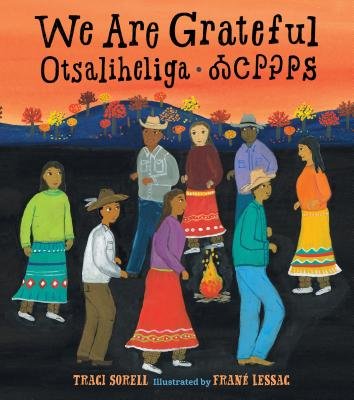Thanksgiving & Native American Heritage Month Resources & Reminders
Resources & Great Place to Start
American Indians in Children's Literature (AICL)
Teaching for Change 2021 Indigenous Peoples’ Day Curriculum Teach-In (especially the section about Native Voices in Children’s Literature by Dr. Debbie Reese, the creator of AICL)
Native American Heritage Month Resources For Teachers
Our ideas for addressing Thanksgiving in 3rd grade this year
(on top of expressing gratitude to all the people who take care of us at school):
Newsela article: A Native American poet reimagines Thanksgiving and the poem referenced in the article: America, I Sing You Back by Allison Adelle Hedge Coke
Read aloud: We Are Grateful: Otsaliheliga by Traci Sorell
We also just bought two new books that we are VERY excited about:
Classified, The Secret Career of Mary Golda Ross, Cherokee Aerospace Engineer by Traci Sorell
JoJo Makoons by Dawn Quigley (an early middle grade series with a Native American main character!)
General Tips for Choosing Resources about Native Americans
Look at publication dates. In general, older (sometimes “classic”) books tend to have stereotypical portrayals of Native American peoples or kids dressing up as “Indians” or playing “Indian” games.
Some examples: Little House on the Prairie, George and Martha (George dresses up as an “Indian”). We are not saying you cannot use these books, but be prepared to address the problematic images, language, or events.
Avoid anything stereotypical, overly simplistic, or cartoonish (think of the Cleveland Indians logo).
Look at IMAGES of Native peoples depicted in the books. Does every Indigenous person look exactly the same? Are the characters displayed as 'savage' 'non-human' in some way? Avoid the “how” hand gesture, tomahawks, gratuitous headdresses, dancing around a fire, taking hostages, etc.
Ask yourself these questions:
Who wrote this piece? (Even Encyclopedia Britannica articles can be used as examples of problematic language/bias). Use the resources list and look FIRST for Indigenous voices on the topic.
Does the author/illustrator specify a tribal nation?
What is the time period?
Is the history accurate? How do I know?
How does the author/illustrator present gender?
Does the author's word choice indicate bias against Native peoples?
(Some of these questions are from Tips for Choosing Culturally Appropriate Books & Resources About Native Americans).
Be mindful of the language used (by the resource and by you): avoid the words chief, squaw, savage, natives, and remember that “Native Americans” refers to thousands of diverse tribes (which means thousands of different cultures and histories) and not just one group of people.
Make sure to proactively balance historical representation of Native American peoples with contemporary voices so as not to perpetuate the idea that American Indians only existed in the past. If a piece speaks of Indigenous peoples only in the past tense-- double triple check why it does that and why you are using it!
Remember that many Indigenous peoples are Americans and were the first Americans.
Avoid resources (or saying yourself) that say "We are all immigrants". Not all of us are. Utilizing that immigrant 'melting pot' rhetoric as the foundational metaphor of the US erases the (long) history of Indigenous Americans.
For more details and tips, please see Tips for Choosing Culturally Appropriate Books & Resources About Native Americans andUnderstanding Prejudice: Teaching About Native American Issues
